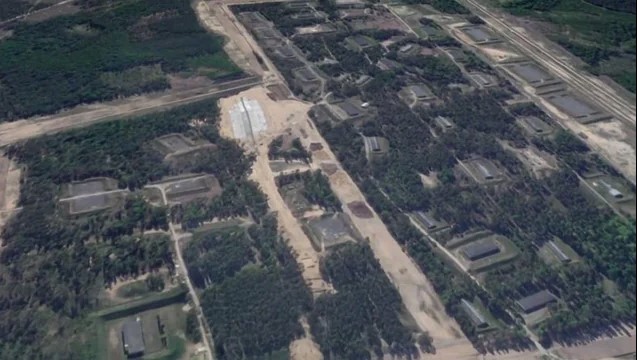In recent years, satellite images have shown major upgrades at five Russian military bases close to Sweden’s borders. Planet Labs, a private satellite company, captured these images. Analysts spotted the upgrades between April and May 2025 at both old Soviet bases and more recent ones.
Russian Military Bases See Major Changes Near Sweden
The locations include military bases in Kaliningrad Oblast, Novaya Zemlya, the Kola Peninsula, and Osipovichi in Belarus. These bases are not far from Sweden. The changes have made security experts and nearby countries uneasy.
Kaliningrad is a small area of Russian land sitting between Poland and Lithuania. It is only about 270 kilometers away from Sweden’s sea border. Satellite images near Kaliningrad show newly built structures, three layers of fences, and modern communication systems. These signs suggest the base is being prepared for important military use.
Even last year, in April 2024, Poland’s President Andrzej Duda warned that Kaliningrad could be used by Russia to place nuclear missiles. That statement caused serious concern in the region, and now, the visible upgrades in satellite images have added to the alarm.
Another place showing changes is the Belarusian town of Osipovichi. This location used to be home to a nuclear storage facility. Now, new security features are being built there. The Federation of American Scientists (FAS), a respected research group, reported the presence of a triple security fence around the facility. They also noted that a modern air-defense system has been installed, along with a new rail-loading platform. These updates indicate that the site may once again be important for Russian military plans, especially for moving or storing weapons.
Submarine Missile Storage Grows in the Arctic
Further north, on the Kola Peninsula, satellite data shows a growing number of buildings. This area serves as a major base for Russian submarines. Satellite images show that Russia has constructed around 50 new storage buildings. Experts believe these buildings store submarine-launched ballistic missiles, also known as SLBMs.
Not just that, a brand-new pier has also been built. A pier is a structure where ships or submarines can dock. This new pier is most likely being used to help load the missiles onto submarines. The scale of construction shows that the Russian navy is making the area even more important for its underwater forces.
The Kola Peninsula is located near the Barents Sea and has always been key for Russia’s northern naval power. Adding new storage and loading spaces suggests the area is being prepared for heavier use.
Farther away, the Novaya Zemlya archipelago in the Arctic Ocean is also seeing new activity. This group of islands was once used during the Soviet era for testing nuclear bombs. Now, recent satellite images show that the testing range is being maintained and possibly improved.
The activity there is still unclear in full detail, but experts note that any renewed interest in such a historically nuclear-linked site is significant. The isolated location of Novaya Zemlya makes it ideal for such secretive operations.
These updates come at a time when the world is watching military movements closely, especially in areas that were once silent or abandoned. The fresh construction at these bases sends a strong signal about the renewed attention these places are receiving.
Russia’s 35.5-Meter RS-28 Sarmat: The Longest Missile That Could Change Global Military Dynamics
Sweden Watching Russian Military Bases Developments Closely
Sweden, which shares maritime borders with Russia, is fully aware of these developments. According to Swedish Defence Minister Pål Jonson, the country has been tracking these upgrades for a long time. He stated that these changes are part of Russia’s investments in nuclear capabilities. He also mentioned that the new Russian military steps may be part of a bigger change in how the country plans to use its weapons and military forces.
While Sweden has not directly commented on what actions it may take, its leadership has acknowledged that the changes are being observed carefully. The minister’s statement highlights the seriousness of the upgrades and confirms that Sweden is not ignoring the signals coming from its neighbor.
These satellite images serve as a reminder that military activity can often be seen from above, even when it is kept quiet on the ground. Tools like those from Planet Labs allow the global community to monitor military movements in ways that were not possible before.
In total, the five locations—Kaliningrad, Osipovichi, Novaya Zemlya, and two sites on the Kola Peninsula—show clear signs of renewed importance. They include missile storage, loading platforms, communication upgrades, and high-level security setups. All of this points to a growing focus by Russia on its western and northern borders.
Countries like Sweden and independent research groups such as the Federation of American Scientists are documenting the developments. These groups use open-source data to make the world aware of military activities that could affect global stability.
For now, the facts from the satellite images show increased construction, improved defense systems, and expanded storage facilities. These changes, happening in a short period, show a clear shift in how Russia is organizing its military presence close to Europe and near Sweden’s doorstep.
